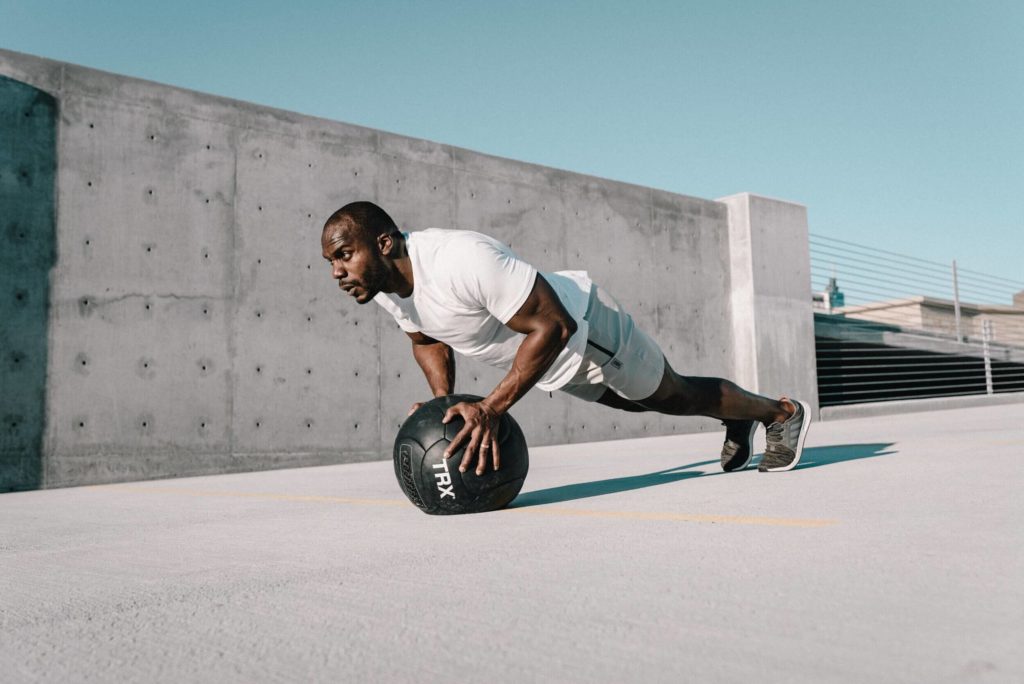Ever grabbed a heavier dumbbell because after weeks with the lighter weight your body could handle more? Or run further, faster because training at a slower rate helped you feel prepared? If so, you’ve unknowingly implemented something called the progressive overload principle.
Sound like a fitness babble? Don’t worry, we make it easy to understand and implement below. Read on to learn what progressive overload is, why and how it works, and exactly how to implement it into your training schedule.
What is Progressive Overloading?
The progressive overload principle is a method of training that says in order to avoid plateaus and continue making gains, you have to continuously challenge your body with new loads, volumes, intensities, distances, speeds, or time under tension. When implemented correctly, this principle helps exercise as efficiently as possible, therefore supporting you in getting fitter and faster.

How does Progressive Overloading Training Work?
Indeed! One 2011 study published in the European Journal of Applied Physiology researchers tested the efficacy of the progressive overload principle by observing 83 exercisers do arm exercises at an increasingly high rep and set counts over the course of 12 weeks.
The researchers concluded that this mechanism was effective at increasing both muscle hypertrophy (size) and muscle strength, making it effective for lifters and bodybuilders alike.
Curious how and why this training protocol works?
Well, when you exercise you are actually creating tiny microscopic tears in the muscle fibres. When you leave the gym, your body relies on a combination of satellite cells, amino acids, micronutrients, and vitamins to rebuild the breakdown, which research shows takes about 72 hours.
Once the repair is complete, your muscle fibres are stronger and more resilient, leaving you stronger, too.
Now that the muscle fibres are more resilient, it will take greater loads and intensities to break them down again the next time. And that’s where progressive overload comes into play.
How to Achieve Progressive Overload?
Best ways to implement the Progressive Overload principle
1.Add Weight
This is the most common way to make an exercise harder, and for good reason: it works!
When increasing weight, go up by no more than 1 to 5 per cent at a time, staying on the conservative side as you approach your 1 rep max.
2.Scale-up
Scaling up to a slightly harder variation during bodyweight movements will challenge your muscles to a greater degree.
For example: Replacing wall push-ups with box push-ups, or replacing the thick band on your banded pull-ups with something thinner.
3.Increase reps
One way to push your muscles to greater fatigue during the same exercise by simply tacking on more reps. So rather than doing 5 sets of 5, do 5 sets of 6, and rather than doing 10 reps of push-ups do 12.

4.Increase sets
Another way to increase the overall volume is by adding an additional set to your workout session. So rather than doing 4 sets of 3 reps, do 5 sets.
5.Reduce rest
A strategy works especially well for days when you’re short on time, cutting your rest time between sets by even just 30 seconds can challenge your muscles enough to achieve the desired breakdown.
6.Ramp up the intensity
Can you do the same number of reps faster? While maintaining your form? Do it. This will skyrocket your heart rate while taxing the fast-twitch muscle fibre in your muscles.
7.Increase time under tension
During any given repetition there’s a concentric, isometric, and eccentric segment. During a squat, the concentric happens when you lower ass-to-grass, the isometric occurs when (if) you pause at the bottom of the squat, and the eccentric occurs when you return to standing.
Slowing down any (or all!) of these segments will challenge your muscles to a greater degree, and therefore the greater the gains are post-recovery.
Your move: Perform your movements at a slower tempo.

How to apply Progressive Overloading to your workout?
Hands down, the best way to apply the progressive overload to your workout routine is to work with a professional trainer.
Why? Because while you do want to make your workouts more challenging, you want to do so gradually. Increasing the difficulty level too quickly can lead to injury. Meanwhile, increasing the difficulty too slowly keeps your workout routine from being as efficient as it could be, which is the main benefit of the progressive overload principle.
A fitness professional will be able to use your training age, current fitness level, and fitness goals to design the Goldilocks of all programs: not too hard, not too easy, but just right!
That said if you can’t afford the cost of a personal trainer or have a ‘do it yourself’ attitude, the good news is that you can implement the progressive overload principle on your own. Just be sure to keep the below 4 training commandments in mind to maximize training efficiency while also minimizing injury risk.
What are the four principles of progressive overload?
- Only increase weight when the last two reps of each set become easy.
- Increase weight by no more than 5 to 10 pounds increments at a time.
- Increase training volume by no more than 10 per cent per week.
- Prioritize form over all else, including – intensity, speed, weight, or movement difficulty.
And most importantly be sure to listen to your body! If your muscle soreness lasts longer than three days, it’s a sign that you’ve gone too hard, and/ or that you aren’t adequately recovered. Pain, dizziness, sleep disruptions, and irritability are all also signs to ease your foot off that gas pedal, and re-prioritize rest and recovery.
Conclusion
When it comes to getting stronger, nothing will help you do so as effectively or as efficiently as progressively overloading. And lucky for you, there’s no shortage of ways to do so.
On your marks, get set, gain for days!








